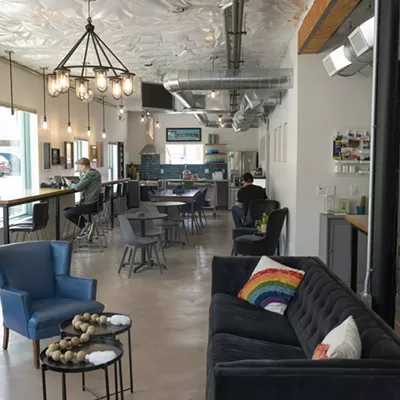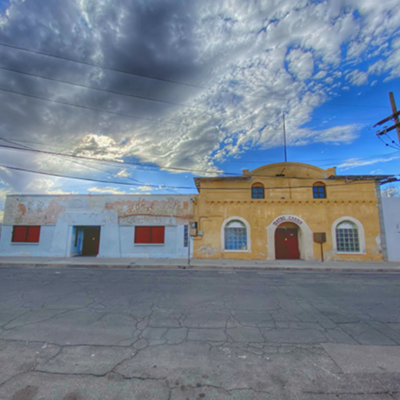The number of foreclosures in Pima County hit a record high in 2009.
The number of trustee-sale notices (a step in the foreclosure process) will approach 12,000, while the number of homes actually sold at auction will reach approximately 5,500, up about one-third from 2008—and almost nine times higher than the number in 2006.
The number of foreclosures will remain at record levels next year, according to some. Others, however, are more hopeful.
Using an analogy fitting the season, Bob Zachmeier of Win3 Realty compares the local foreclosure situation to a two-humped camel.
"We're coming to the end of the first hump, or first wave," Zachmeier suggests, "and wave two will last through 2014."
Economic hardship, Zachmeier says, was a major factor in the first round of foreclosures. The second wave will be marked by people walking away from houses because they are "upside down," owing more than their homes are worth, he predicts.
Richard Rhey, executive director of the Southwest Fair Housing Council, agrees that foreclosures will remain high. "They'll continue at the same rate, if not (go) higher, then hit a bottom ... after 2010," he says.
Betty Villegas, Pima County's housing program manager, agrees with Zachmeier that the reasons for foreclosures are shifting. But she doesn't agree with his pessimistic outlook.
She says that people need to look at houses as homes.
"Our parents wanted stability for their families," Villegas says of an earlier generation of homebuyers, "and we have to go back to that. A home was more than just an investment, and people today need to understand that. If they can afford the payments, people should stay in their home for the long haul."
Villegas says she has seen both local successes and failures concerning federal efforts to reduce the number of foreclosures. However, a report released last week by a congressional oversight panel found that two federal programs initiated in February to reduce the number of foreclosures nationwide have had little impact so far. The study also concludes that the future benefits don't look so promising, either.
"As currently structured," the report states of the Home Affordable Modification Program, "HAMP appears capable of preventing only a fraction of foreclosures."
Despite the limited impact of that program, Villegas believes foreclosures in Tucson will decrease in the coming year. "I think the number is going to be less," she predicts, "not a lot, but less."
Jay Butler, of the Realty Studies program at Arizona State University, is also somewhat optimistic about the future for foreclosures in Pima County. At the same time, he also emphasizes that the reasons for foreclosures are changing.
Considerable blame has been placed on subprime loans and adjustable-rate mortgages as leading causes of foreclosures. But according to a nationwide analysis prepared in November by the Mortgage Bankers Association (MBA), those reasons are no longer at the forefront.
"Prime fixed-rate loans continue to represent the largest share of foreclosures started," the association reports, "and the biggest driver of the increase in foreclosures."
The association also reports that the combined percentage of mortgages that are either delinquent by one payment or in foreclosure is more than 14 percent nationwide. That's the highest level in the 37 years the MBA has been keeping track.
Butler states that Tucson "never got into the game" of out-of-control home price increases like the Phoenix area did. Speaking generally of foreclosures in Arizona, Butler thinks there will be an increase in early 2010, and then the number will level off.
Mortgage banker Mark Ross concurs. "I don't see another huge wave," he says of 2010. "I see more, but not a significant number. I don't feel like it's doom-and-gloom with foreclosures.
"When the job market starts to rebound," Ross continues, "we're going to see much less impact (with foreclosures). But if jobs continue to suffer, then we'll have higher foreclosure numbers."
Zachmeier thinks banks and the federal government should be doing everything they can to encourage more short sales, in which a bank agrees to let a home be sold for less than the mortgage amount. That, he believes, would cut down on the number of foreclosures.
Villegas offers another suggestion to slow the economic bleeding caused by record high foreclosure rates.
"The federal government needs to provide more assistance to homeowners instead of banks," she says. "We need more housing counselors," people who work with families facing foreclosure.
Rhey argues that lending institutions need to do more to help.
"The banks have a lot of responsibility for what occurred," he says, "and a lot of resources (to help). Until they step up, it will be a slow, slow recovery."
Calling the housing situation "viral," Rhey believes foreclosures will continue to impact the local housing market for a decade.
"I would like to say something more rosy," Rhey says, "but at the same time, we've got to face facts."






